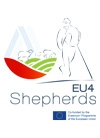Herbology
|
Course title: |
Herbology |
|
|
Course code: |
AFHSK |
|
|
ECTS: |
5 |
|
|
In-class hours |
Lectures: |
30 |
|
Laboratory work/Tutorials: |
30 |
|
|
Self-preparation hours |
Practical training: |
- |
|
Other: |
65 |
|
|
Total hours: |
125 |
|
|
Language: |
English |
|
|
Study cycle: |
Bachelor, Master, PhD |
|
|
Semester: |
Winter & Summer |
|
|
Faculty: |
Faculty of Agronomy |
|
|
Name of the lecturer(s): |
Prof. Shteliyana Kalinova, PhD |
|
|
Mode of delivery: |
Face-to-face, distance learning, a combination of both |
|
|
Prerequisites: |
- |
|
|
Learning outcomes of the course unit: |
Biological groups of weeds, the damage from weeds and opportunities to combat them; agro-technical methods and means for the control of weed infestation; the chemical method for the weed control; the phytotoxic activity and selectivity of herbicides and their influence on plant production, environment and humans; the classification of the herbicides and the specifics of their application; integrated weed control in main field crops, vineyards and orchards; environmentally sound methods for the control of weed infestation, biological weed control and more. Through the utilization of theoretical knowledge and practical skills, the students will be able to apply and assess the integrated weed control and the opportunities for environmental protection. |
|
|
Course contents: |
Lectures - 30 academic hours 1. Biology, ecology and harmfulness of weeds. 2. Origination and development of the problem of the weeds and fight against them. 3. Biology, ecology and harmfulness of weeds. Direct and indirect damage from the weeds. 4. Biology, ecology and harmfulness of weeds. Biological and economic harmfulness of weeds. 5. Morphological, biological and ecological characteristics of the weeds. Biological groups weeds - annual weeds. 6. Biological groups weeds - perennial weeds. 7. Biological groups weeds - parasitic weeds. 8. Classification of methods of weed control. Indirect weed control. 9. Weed control. Direct weed control. Physicomechanical weed control. 10. Weed control. Biological weed control. 11. Essence of the chemical method for weed control. Chemical weed control- advantages and disadvantages. 12. Phytotoxic action and selectivity of the herbicides. 13. Influence of herbicides on plant production and soil microflora. Lateral effects of the herbicides and the risk of environmental pollution. 14. Toxicity of the herbicides on humans and animals. 15. General principles for using the herbicides. 16. Integrated weed control in main field crops - wheat and barley. 17. Integrated weed control in main field crops - rice. 18. Integrated weed control in major field crops - soybean. 19. Integrated weed control in major field crops - beans. 20. Integrated weed control in major field crops - chickpeas 21. Integrated weed control in major field crops - maize. 22. Integrated weed control in major field crops - sunflower. 23. Integrated weed control in major field crops - sugar beet. 24. Integrated weed control in major field crops - tomatoes. 25. Integrated weed control in major field crops -potatoes. 26. Integrated weed control in major field crops - tobacco. 27. Integrated weed control in major field crops - cotton. 28. Integrated weed control in perennial crops. 29. Systems for maintenance of the soil surface in orchards. 30. Systems for maintenance of the soil surface in vineyards.
Practical exercises 1. Getting to know the classification of weeds - 2 hours 2. Recognizing a herbarium of ephemeral, winter-spring, early spring and late-spring weeds - 2 hours 3. Recognizing a herbarium of rhizome, root-sprout weeds with spindly root, with creeping stems and other perennial weeds - 2 hours 4. Recognizing a herbarium of two-year and parasitic weeds - 2 hours 5. Recognizing on seeds and fruits of the most widespread weeds- 2 hours 6. Recognition of weeds in different phases and agrocenoses, collection and herbarium. Methods for assessing the degree of weed infestation - 2 hours 7. Recognition of weeds in different phases and agrocenoses, collection and herbarium. Methods for assessing the degree of weed infestation - 2 hours 8. Recognition of weeds in different phases and agrocenoses, collection in herbarium. Methods for assessing the degree of weed infestation - 2 hours 9. Recognition of weeds in different phases and agrocenoses, collection in herbarium. Methods for assessing the degree of weed infestation- 2 hours 10. Recognition of weeds in different phases and agrocenoses, collection in herbarium. Methods for assessing the degree of weed infestation - 2 hours 11. Getting to know the effectiveness and phytotoxic effects of herbicides in arable and vegetable crops. - 2 hours 12. General using herbicides - 2 hours 13. Schemes for chemical combat in field crops – 2 hours 14. Schemes for chemical combat in vegetable crops - 2 hours 15. Schemes chemical struggle in perennials crops - 2 hours |
|
|
Recommended or required reading: |
1. Caseley J.C. at al., 1991. Herbicide Resistance in Weeds and Crops 2. Mattews G.A. at al, 2015. Pesticide Application Methods. 3. Tonev, T. at al., 2011. Guide to Integrated Weed Management and Proficiency in Agriculture 4. Tonev, T. at al., 2018. A guidebook for exercises on general agriculture and herbology 5. Tonev, T. at al., 2018. General Agriculture 6. Weikai Yan, 2014. Crop Variety Trials. Data Management and Analysis |
|
|
Planned learning activities and teaching methods: |
The lectures are delivered by PowerPoint presentations. The seminars take the form of a discussion between the students and the lecturer whit reference to pre-selected topics. |
|
|
Assessment methods and criteria: |
The course ends with a written examination or a test. The students can choоse the way. |
|
 - Events on the occasion of the 80th anniversary of AU
- Events on the occasion of the 80th anniversary of AU











